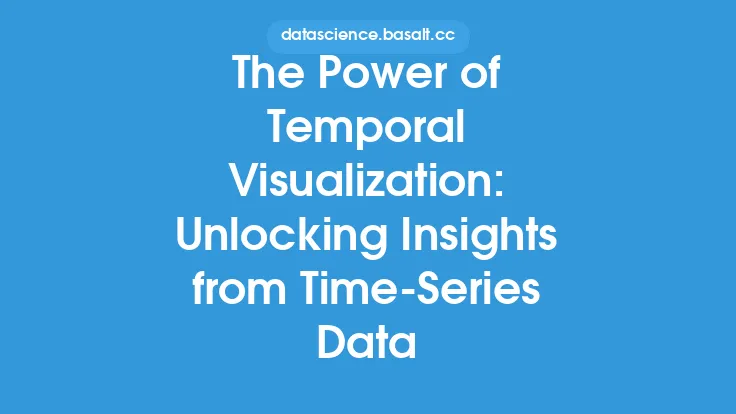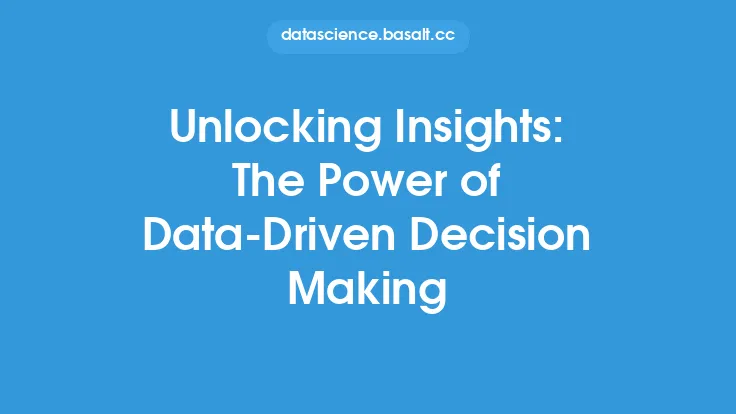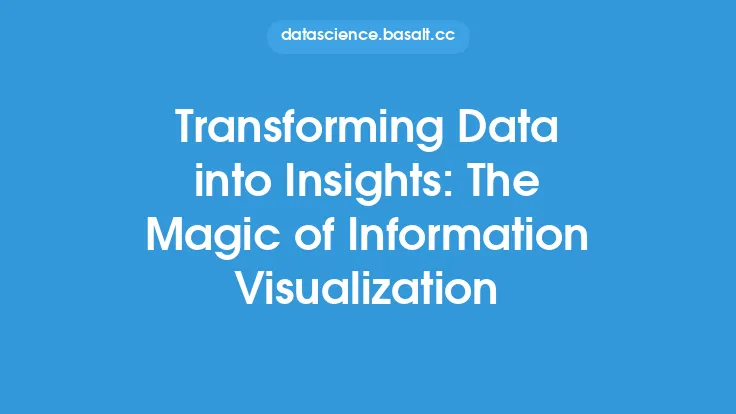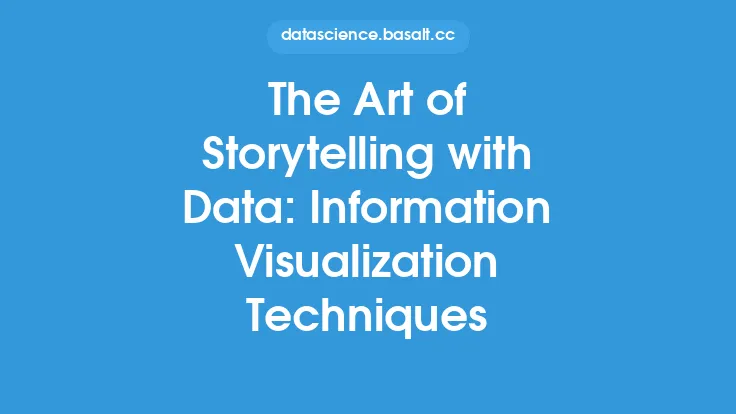Geospatial analysis is a powerful tool that has revolutionized the way we understand and interact with our environment. By combining geographic information systems (GIS) with data visualization techniques, geospatial analysis enables us to unlock insights and patterns that would be impossible to discern through traditional methods. In this article, we will delve into the world of geospatial analysis and explore how data visualization can be used to extract meaningful information from geospatial data.
Introduction to Geospatial Analysis
Geospatial analysis is the process of examining and interpreting geographic data to extract meaningful information and patterns. This involves using various techniques such as spatial autocorrelation, spatial regression, and spatial interpolation to analyze and model geospatial data. Geospatial analysis can be applied to a wide range of fields, including urban planning, environmental monitoring, public health, and emergency response. By using geospatial analysis, organizations and individuals can gain a deeper understanding of their environment and make informed decisions.
Data Visualization in Geospatial Analysis
Data visualization plays a critical role in geospatial analysis, as it enables us to communicate complex geographic information in a clear and concise manner. Geospatial data visualization involves using various visualization tools and techniques to represent geographic data in a way that is easy to understand and interpret. This can include using maps, charts, and graphs to display data, as well as using interactive and dynamic visualizations to explore and analyze data. By using data visualization, we can identify patterns and trends in geospatial data that would be difficult to discern through traditional methods.
Types of Geospatial Data
There are several types of geospatial data that can be used in geospatial analysis, including vector data, raster data, and network data. Vector data represents geographic features as points, lines, and polygons, and is often used to represent boundaries, roads, and other linear features. Raster data, on the other hand, represents geographic features as a grid of pixels, and is often used to represent continuous surfaces such as elevation and temperature. Network data represents the relationships between geographic features, and is often used to model transportation systems and other networks.
Geospatial Data Sources
Geospatial data can be obtained from a variety of sources, including government agencies, satellite imagery, and crowd-sourced data. Government agencies such as the US Census Bureau and the National Geospatial-Intelligence Agency provide a wide range of geospatial data, including demographic data, economic data, and environmental data. Satellite imagery provides high-resolution images of the Earth's surface, and can be used to monitor environmental changes and track natural disasters. Crowd-sourced data, such as OpenStreetMap, provides a collaborative platform for collecting and sharing geospatial data.
Geospatial Analysis Techniques
There are several geospatial analysis techniques that can be used to extract meaningful information from geospatial data. Spatial autocorrelation analysis is used to measure the similarity of neighboring values, and can be used to identify clusters and hotspots. Spatial regression analysis is used to model the relationship between geographic variables, and can be used to predict outcomes and identify trends. Spatial interpolation is used to estimate values at unsampled locations, and can be used to create continuous surfaces from discrete data points.
Data Visualization Tools and Software
There are several data visualization tools and software that can be used for geospatial analysis, including ArcGIS, QGIS, and Tableau. ArcGIS is a popular GIS software that provides a wide range of tools and features for geospatial analysis and data visualization. QGIS is an open-source GIS software that provides a flexible and customizable platform for geospatial analysis and data visualization. Tableau is a data visualization software that provides a user-friendly interface for creating interactive and dynamic visualizations.
Applications of Geospatial Analysis
Geospatial analysis has a wide range of applications, including urban planning, environmental monitoring, public health, and emergency response. Urban planning involves using geospatial analysis to optimize urban design and development, and to identify areas of high population density and growth. Environmental monitoring involves using geospatial analysis to track environmental changes and monitor natural disasters, and to identify areas of high conservation value. Public health involves using geospatial analysis to track disease outbreaks and identify areas of high risk, and to optimize healthcare resource allocation. Emergency response involves using geospatial analysis to respond to natural disasters and other emergencies, and to optimize resource allocation and logistics.
Challenges and Limitations
Despite the many benefits of geospatial analysis, there are several challenges and limitations that must be considered. One of the main challenges is the complexity of geospatial data, which can be difficult to collect, process, and analyze. Another challenge is the need for specialized software and expertise, which can be a barrier to entry for many organizations and individuals. Additionally, geospatial analysis can be limited by the quality and accuracy of the data, which can be affected by factors such as sampling bias and measurement error.
Future Directions
The future of geospatial analysis is exciting and rapidly evolving, with new technologies and techniques emerging all the time. One of the main trends is the increasing use of big data and machine learning in geospatial analysis, which is enabling the analysis of large and complex datasets. Another trend is the increasing use of cloud computing and web-based platforms, which is enabling greater collaboration and accessibility. Additionally, the increasing use of mobile devices and location-based services is enabling the collection of geospatial data in real-time, and is opening up new opportunities for geospatial analysis and data visualization.
Conclusion
Geospatial analysis is a powerful tool that has the potential to unlock new insights and patterns in geographic data. By combining GIS with data visualization techniques, geospatial analysis enables us to extract meaningful information from geospatial data and to communicate complex geographic information in a clear and concise manner. As the field of geospatial analysis continues to evolve, we can expect to see new technologies and techniques emerging, and new applications and opportunities arising. Whether you are a researcher, a practitioner, or simply someone who is interested in geography and data visualization, geospatial analysis is an exciting and rapidly evolving field that has the potential to make a real difference in the world.





